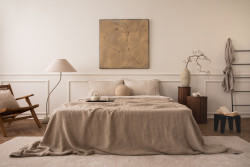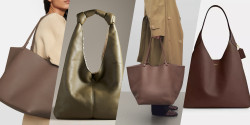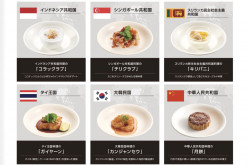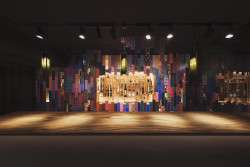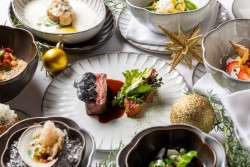
April 25, 2013
Tokyo4Families
Shop, stay or play—there’s plenty for parents and kids to do in the city
By Metropolis

Skip to p.1 Cheap Thrills—inexpensive adventures
Skip to p.3 Young Adult—playtime for kids at luxury hotels
Babeing Ape
Togging up the toddlers in Tokyo
By Jane Kitagawa
Despite the country’s declining birth rate, Japan remains attractive for international children’s wear companies—in fact, it’s the third largest market in the world. A number of international brand stores have gained popularity here in recent years—think Gap and H&M—while Carter’s/OshKosh B’gosh recently opened two flagship stores in Yokohama [see Q&A, below]. High-end designers such as Burberry and Marc Jacobs have also released children’s lines to the lucrative market.
Thrifty threads
Sempai (old-hand) moms will be the first to explain that once your sprog enters daycare, kindergarten or elementary school, and unless a uniform is worn, a number of clothing changes per day will be needed—whether your child uses them or not. Many mothers opt to use more economical clothing for school and dress their kids in pricier gear elsewhere. School clothing needs to be named and tagged accordingly; while some items feature appropriate nametags, Akachan Hompo and Nishimatsuya also provide iron-on labels or clothing markers. Uniqlo has gained recognition for its seasonal underwear—thermals for winter, mesh air-weave for sultry summer—but cheap doesn’t necessarily mean nasty: it frequently signs licensing deals so kids can be decked out with the latest characters.
Global garments
With a focus on casual, US-style, Gap offers classic clothing for babies and kidlets alike. But it’s the brand’s second collaboration with iconic designer Diane Von Furstenberg, out April 25 at select Tokyo stores, that has fashionista moms salivating. Sweden’s H&M Kids, meanwhile, is known for quality threads at reasonable prices. Spring/summer ranges for boys offer character faves to preppy must-haves, while girls’ lines address floral fashion. Carter’s currently sells Carter’s and OshKosh B’gosh-branded products through 97 retail locations here, including 14 branded stores and 83 additional retail points.
Local labels
For those with cash to splash, Hysteric Mini [pictured], the pint-sized offshoot of Hysteric Glamour, and streetwear label Bape provide funky, colorful clothing, while Breeze stores, found across the city, stock similar-styled, lower-cost threads.
J-size GUIDe
60—up to 3 months old, 60cm tall, 5kg
70—up to 6 months old, 70cm tall, 9kg
80—up to 18 months old, 80cm tall, 11kg
90—up to 2 years old, 90cm tall, 13kg
95—up to 3 years old, 95cm tall, 14kg
100—3-4 years, 95-105cm tall
110—4-5 years, 105-115cm tall
120—5-6 years, 115-125cm tall
Richard Gustafson
Managing Director, Carter’s Japan
Why create Carter’s Japan? Japan is the gateway to Asia. While a lot of companies look at China as the big growth market, Japan is still a market where you need to put a flag in the ground. Carter’s is in about over 70 countries worldwide [but] the only countries where it manages the business vertically are the US, Canada and Japan. This move represents a redefinition of what Carter’s is, i.e. not just a North American babies’ and kids’ brand but a global brand where the company’s taken an active role in managing the day-to-day business.
Yet Carter’s used to have a tie-up with a licensee. For the last twelve years there was a company based in Ohio that ran the business in Japan. The big thing that differentiates what we’re doing now is it’s directly managed, but also that all the products now are 100% the same as you see in the US. We recognized the Japanese consumer travels—e.g. to Guam, Hawaii, mainland US—they’re savvy and they know quality. Our goal is to give them the same quality.
What are the upcoming trends for the spring/summer season? We have brought out a selection of the best volume-driving, most popular styles from the US. In girls, you’ll see very bright, exciting colors; very American branding—T-shirts branding slogans like “I love Mommy!,” “Daddy’s favorite little girl”—which is iconic to the brand in the States, but has never been seen in Japan before.
What research have you undertaken as to what the Japanese market wants? We know the Japanese consumer will respond to the brand, we just don’t know what parts. You can spend a lot of time and money [on focus groups] but the best way is to put yourself out there. Old Navy opened one store in Japan and ran it for a year… to figure out what works. We just opened two flagship stores on March 9 with Hankyu Department Store at Mosaic Mall in Kohoku, Center Kita, Kanagawa—one is OshKosh and the other is Carter’s. They’re doing very well but we’re also learning a lot about what works and what doesn’t.
Such as? We’ve learned certain colors don’t perform as well as we thought. For instance, green. Who’d have thought that? We also thought people would trend more to smaller sizes in Carter’s and larger in OshKosh, but there’s almost equal demand for baby products in both. Overall, however, the response has been generally very positive. One or two out of every three customers have told us they’ve been waiting for the store to open, they’ve shopped the lines in Guam or Hawaii or online, and are excited. The same goes for the current pop-up store in Osaka, they want to know when we will open a brick-and-mortar store there.

Skip to p.1 Cheap Thrills—inexpensive adventures
Skip to p.2 Babeing Ape—togging up the toddlers
Young Adult
Playtime is actually for kids at these Tokyo hotels
By Richard P. Greenfield
Tokyo offers everything you could dream of—if you’re a grown up. For children, this shimmering oasis can be nothing but a mirage. In other parts of Asia and elsewhere, hotels and resorts tend to offer activities and attractions for kids. In Tokyo—not so much. Fortunately, there are exceptions.
In bustling Shinjuku is the Hilton Tokyo. The flagship of the country’s 10 hotels (with an 11th set to open), this hefty venue has 812 rooms and 38 stories.
After seeing the chocolate fountain, with fruit nearby for dipping, you might wonder what else kids would need. That’s a question food and beverage coordinator Yuki Nakajima asked herself, after being inspired by a trip to Tokyo’s Kidzania.
“We started the Little Hilton Program as a way to show kids a bit more about the hotel,” she explains. “They get their own membership card, and depending on the program [Little Concierge, Little Chef, etc.] they get to see a bit more of what the hotel is.”
This is no daycare program—kids are accompanied by their parent(s). “We try to time the programs to holidays or Sundays.”
The Little Hilton Programs are not always offered so call ahead to check dates and times. On other days, there are special kid’s tables at the buffet —just turn left at the chocolate fountain and succumb to temptation.
The Four Seasons Hotel Tokyo at Marunouchi is just a few minutes walk from Tokyo station. The smallest of the city’s big international hotels, it was renovated this year to make rooms more kid- and family-friendly.
Offerings include PlayStation 3 consoles and games, more children’s movies alongside on-demand bicycle helmets, Bianchi bicycles and an in-room espresso machine to keep parents out of their charges’ hair.
A place’s size is not what matters to kids, but the scale. This hotel is only six stories, with every room overhanging the station and the tracks. In fact, the passing locomotives become interactive entertainment if you request the in-room train set—when the trains go by, theirs begin to circle the room. That living stage set is key for adults, and even more so for keeping kids in dreamland.
